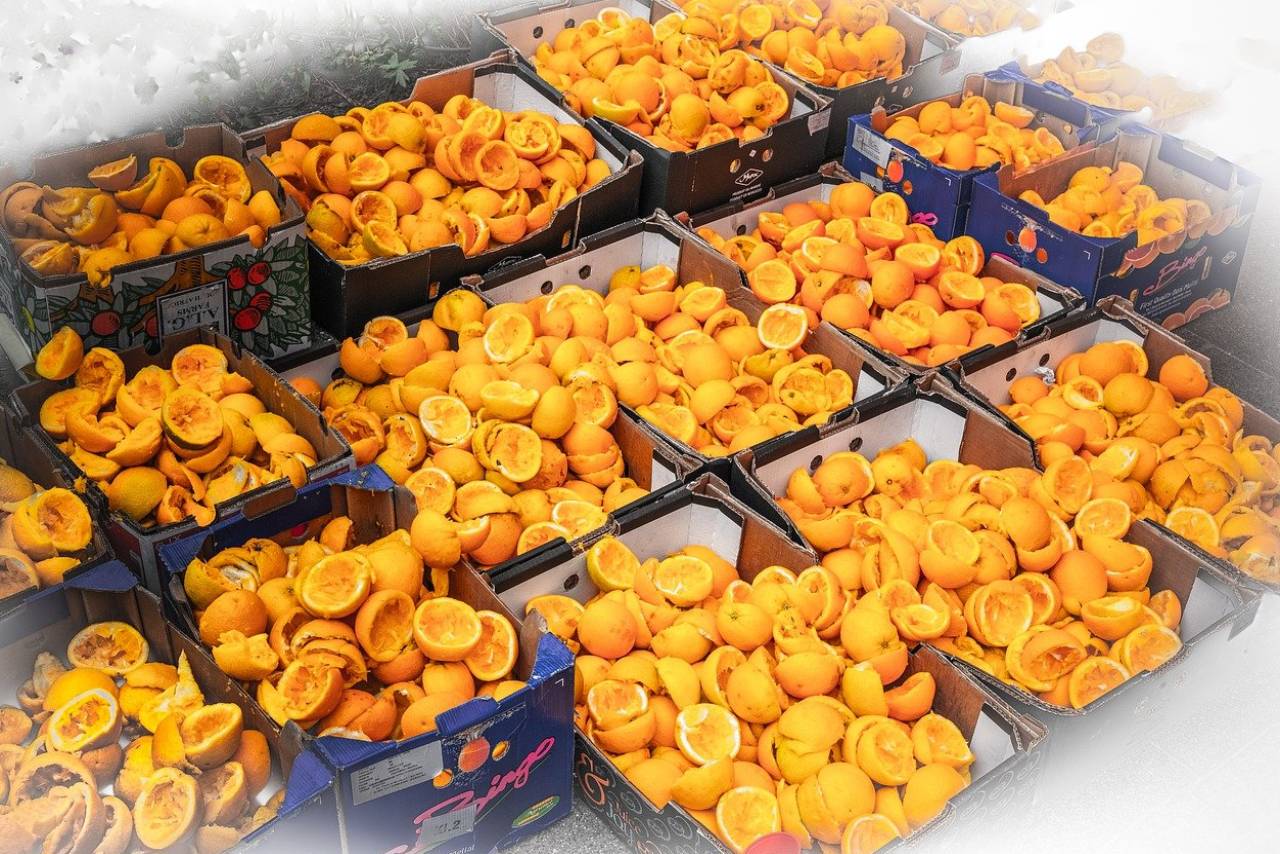Creating a Simple Restaurant Business Inventory System
One of the most important tools you need is a restaurant business inventory system. Here are the basics to get you started on your way to creating your own restaurant inventory system.
Lauren Christiansen10/22/2021
What is an Inventory System?
What is an inventory system? Inventory systems are a way of recording and managing the goods owned by a company. Inventory systems typically include a list of the items owned by a company. They may also include information about the location of the items, the cost of the items, and the selling price. Inventory systems can be used to track the cost of inventory, to keep track of how old a particular item is. Inventory systems are an important part of a company's operations.
What is a Restaurant Inventory System?
In the old days, restaurant managers used manual processes to count inventory. Customer orders came in quickly and there was no technology system in place to make real-time updates. Non-computerized business processes will always lead to human error because humans are sometimes tired, overwhelmed, or unequipped. Managers typically calculated inventory counts on weekends or after shifts when they had the time. There just wasn't enough manpower or resources to prioritize inventory management.
Thankfully, modern technology has solved a lot of these problems. Restaurant inventory systems are software that helps restaurateurs manage food inventory, such as the various expenses and reordering process. Restaurant owners use RIS's to monitor real-time stock levels so they can offer customers the menu items they want and still maintain profitability.
Restaurant inventory systems generate accurate and reliable data that removes the guesswork out of inventory-related decisions. With the right solution in place, owners can accurately predict future inventory, stay within a budget, and optimize the menu to meet customer demands. Employees are also happier because they have the tools in place to perform their jobs more efficiently.
Thankfully, modern technology has solved a lot of these problems. Restaurant inventory systems are software that helps restaurateurs manage food inventory, such as the various expenses and reordering process. Restaurant owners use RIS's to monitor real-time stock levels so they can offer customers the menu items they want and still maintain profitability.
Restaurant inventory systems generate accurate and reliable data that removes the guesswork out of inventory-related decisions. With the right solution in place, owners can accurately predict future inventory, stay within a budget, and optimize the menu to meet customer demands. Employees are also happier because they have the tools in place to perform their jobs more efficiently.

Why is a Restaurant Inventory System Important?
The number one factor that impacts restaurant profit margins is food waste. Lots of restaurants go under each year because they struggle with exorbitantly high food costs. There are several reasons for this. Many owners fail to optimize their menu properly and prioritize the items that are profitable and popular. Other owners don't have a good system in place to accurately track inventory. Some owners struggle with food theft and loss, which further impacts food costs and the bottom line. The common denominator is that none are using the best inventory management system or set of best practices.
Using a restaurant business inventory system is critical to controlling costs in your restaurant. A computerized system automatically updates each time a new customer order is keyed in. This means that all inventory levels are accurate in real-time. Restaurant owners know exactly what is going in and out of the restaurant. Furthermore, owners can see exactly who keyed in what, which helps hold employees accountable. If there is food theft or waste, managers know who is responsible and can use disciplinary measures to mitigate it in the future. It eliminates the guesswork from the equation.
Another benefit of an inventory management system functionality is the reporting features. Managers can use these data insights to drill down into bottlenecks and make better reordering decisions. Other functionality will prompt the system to automatically reorder items when they get to a certain level. This removes a lot of time-consuming, meticulous work away from overwhelmed employees and managers. It allows them to focus on more critical aspects of the job, such as marketing, upselling, and offering great service.
Customers are happier because they have access to the menu items they want at all times. This is a win-win for restaurants because happier customers tend to purchase more items. They also tend to tell their friends and evolve into return customers. A good inventory management system gives restaurants the competitive edge and stellar reputation they need in this digital age.
So, now that we know what an inventory management system is, you can learn how to use it to your benefit. You can also incoprorate some tips to optimize the Inventory Management process and eliminate errors. Read ahead to learn the top ways a computerized system and best practices can help you manage inventory more effectively.
Using a restaurant business inventory system is critical to controlling costs in your restaurant. A computerized system automatically updates each time a new customer order is keyed in. This means that all inventory levels are accurate in real-time. Restaurant owners know exactly what is going in and out of the restaurant. Furthermore, owners can see exactly who keyed in what, which helps hold employees accountable. If there is food theft or waste, managers know who is responsible and can use disciplinary measures to mitigate it in the future. It eliminates the guesswork from the equation.
Another benefit of an inventory management system functionality is the reporting features. Managers can use these data insights to drill down into bottlenecks and make better reordering decisions. Other functionality will prompt the system to automatically reorder items when they get to a certain level. This removes a lot of time-consuming, meticulous work away from overwhelmed employees and managers. It allows them to focus on more critical aspects of the job, such as marketing, upselling, and offering great service.
Customers are happier because they have access to the menu items they want at all times. This is a win-win for restaurants because happier customers tend to purchase more items. They also tend to tell their friends and evolve into return customers. A good inventory management system gives restaurants the competitive edge and stellar reputation they need in this digital age.
So, now that we know what an inventory management system is, you can learn how to use it to your benefit. You can also incoprorate some tips to optimize the Inventory Management process and eliminate errors. Read ahead to learn the top ways a computerized system and best practices can help you manage inventory more effectively.

1. Use Inventory System with a Few Manual Processes
A POS system integrates with your inventory management software, as well as with other internal software solutions. You can manage all business processes with a few simple clicks, including employee management, accounting, loyalty programs, and more. Best of all, a POS system can generate a Restaurant Report so you can plan future inventory needs.
The one problem is that a Restaurant Inventory solution does not account for the causes of inventory shortages. It will not tell you why there was spoilage of one ingredient or why there was a spill that led to a remake of an order. This is where you may need to use some manual processes to get a full picture of each situation.
Consider making a Spoil/Spill/Waste sheet for employees to sign. Each time there is an unfortunate accident or mistake, the responsible worker must write down what happened and why. This is not to punish workers or make them feel bad, but to identify problem areas and prevent them in the future. It will tell the full story, which most POS systems are not capable of doing.
The one problem is that a Restaurant Inventory solution does not account for the causes of inventory shortages. It will not tell you why there was spoilage of one ingredient or why there was a spill that led to a remake of an order. This is where you may need to use some manual processes to get a full picture of each situation.
Consider making a Spoil/Spill/Waste sheet for employees to sign. Each time there is an unfortunate accident or mistake, the responsible worker must write down what happened and why. This is not to punish workers or make them feel bad, but to identify problem areas and prevent them in the future. It will tell the full story, which most POS systems are not capable of doing.

2. Keep a Schedule
Every busy manager knows how important it is to organize business processes. From employee scheduling to training to the reservation process, there must be an established system in place to maximize efficiency. The same goes for your inventory counts and reordering process.
Managers must create a schedule to know exactly how many ingredients are used within each time frame. For example, you can count the most popular menu items each day and the non-perishable/least popular items a few days a week. Coupled with reporting features on a POS or inventory management system, you analyze and identify patterns. This will help to optimize the menu, prevent future accidents, and train employees more effectively. It will also minimize errors so you can make better business decisions and achieve Business Growth.
Managers must create a schedule to know exactly how many ingredients are used within each time frame. For example, you can count the most popular menu items each day and the non-perishable/least popular items a few days a week. Coupled with reporting features on a POS or inventory management system, you analyze and identify patterns. This will help to optimize the menu, prevent future accidents, and train employees more effectively. It will also minimize errors so you can make better business decisions and achieve Business Growth.

3. Use the FIFO Method
Thousands of restaurants have used the first in first out (FIFO) method to minimize food waste and cut costs. This method requires that you use the items that you first received before the rest. For example, you received a shipment of steak on Tuesday and another one on Saturday. You would use the Tuesday shipment first to avoid spoilage and potential waste.
The FIFO method is easier if you organize all kitchen and storage areas in a specific way. Put the items you are going to use first in the front so employees reach for them automatically. When it's time to use other items, move them towards the front (if they aren't already moved automatically). You can also use specific containers and dispensers that providers make for those following the first in first out method. Research various providers online to find the best containers that fit your budget.
The FIFO method is easier if you organize all kitchen and storage areas in a specific way. Put the items you are going to use first in the front so employees reach for them automatically. When it's time to use other items, move them towards the front (if they aren't already moved automatically). You can also use specific containers and dispensers that providers make for those following the first in first out method. Research various providers online to find the best containers that fit your budget.
4. Don't Toss Surplus Ingredients
A lot of restaurant owners inadvertently toss their surplus ingredients and waste thousands of dollars a year. Why not put these already purchased items to good use? Small businesses and non-chain establishments can use these ingredients in creative ways to optimize asset management.
Potential solutions may include adjusting the menu for a week or so, creating a special, or offering a buy-one-get-one promotion. Let customers know there will be a temporary adjustment to the menu for a short time. While this may be time-consuming, it will prevent a lot of unnecessary food waste and will save money. Most customers will be just fine with the changes, and may even enjoy the spontaneity.
Potential solutions may include adjusting the menu for a week or so, creating a special, or offering a buy-one-get-one promotion. Let customers know there will be a temporary adjustment to the menu for a short time. While this may be time-consuming, it will prevent a lot of unnecessary food waste and will save money. Most customers will be just fine with the changes, and may even enjoy the spontaneity.

5. Use Inventory System Data to Optimize Reordering
Too many restaurant owners simply order a fixed set of items on the menu without thinking it through. They end up wasting a ton of money and food in the process. Fortunately, you don't have to follow in their footsteps. You can implement more effective order management practices.
Your inventory system or POS will collect a lot of valuable data that you can put to good use. Some inventory software even incorporate predictive analytics tools that use historical data to make future inventory predictions. Other management systems will automatically reorder certain items when they get a specific level. Even if you don't use a cloud based computerized system, you can still optimize inventory control using historical data. Simply review which ingredients were eaten frequently in the past and make better purchasing decisions moving forward.
Your inventory system or POS will collect a lot of valuable data that you can put to good use. Some inventory software even incorporate predictive analytics tools that use historical data to make future inventory predictions. Other management systems will automatically reorder certain items when they get a specific level. Even if you don't use a cloud based computerized system, you can still optimize inventory control using historical data. Simply review which ingredients were eaten frequently in the past and make better purchasing decisions moving forward.
